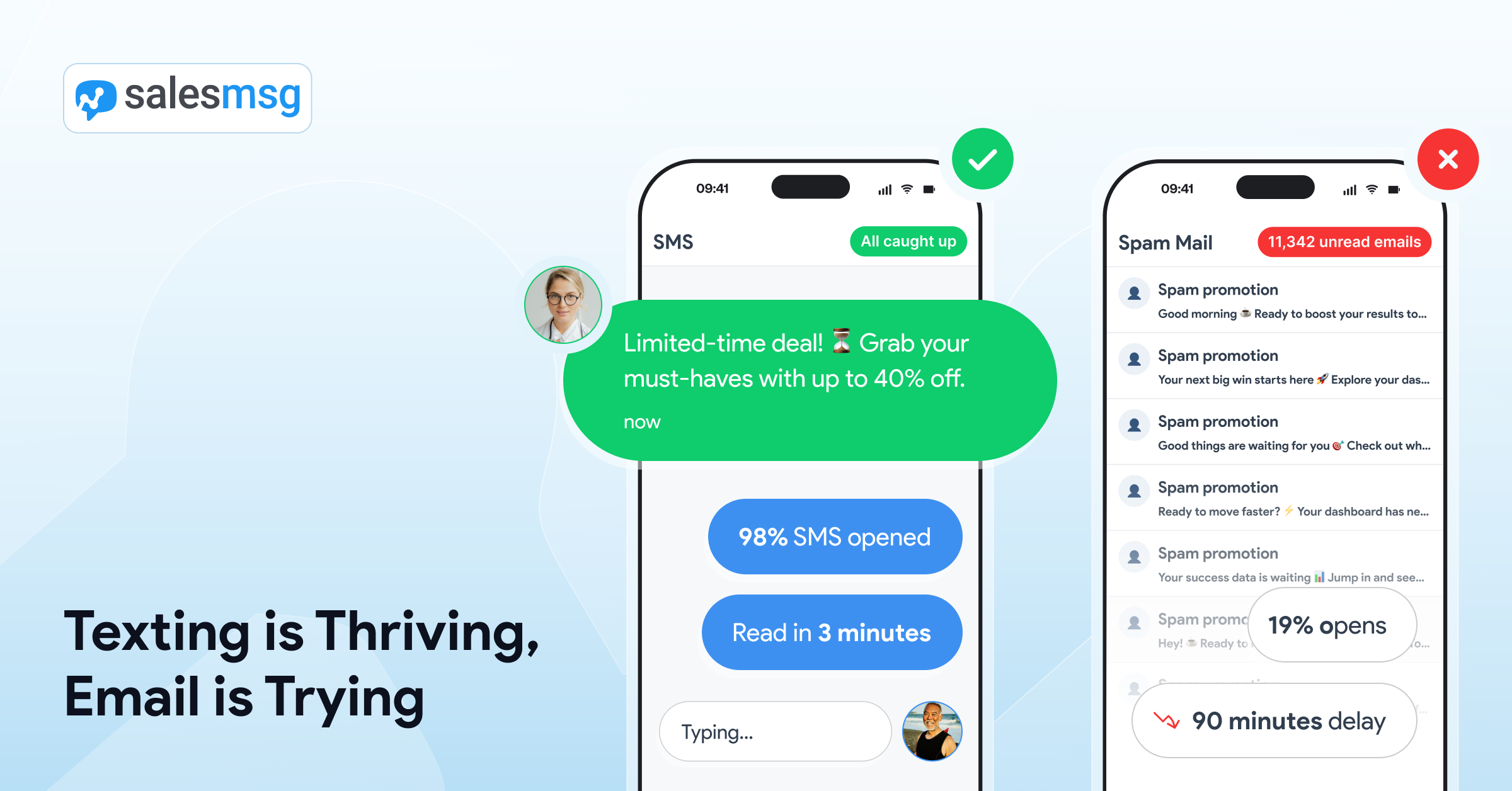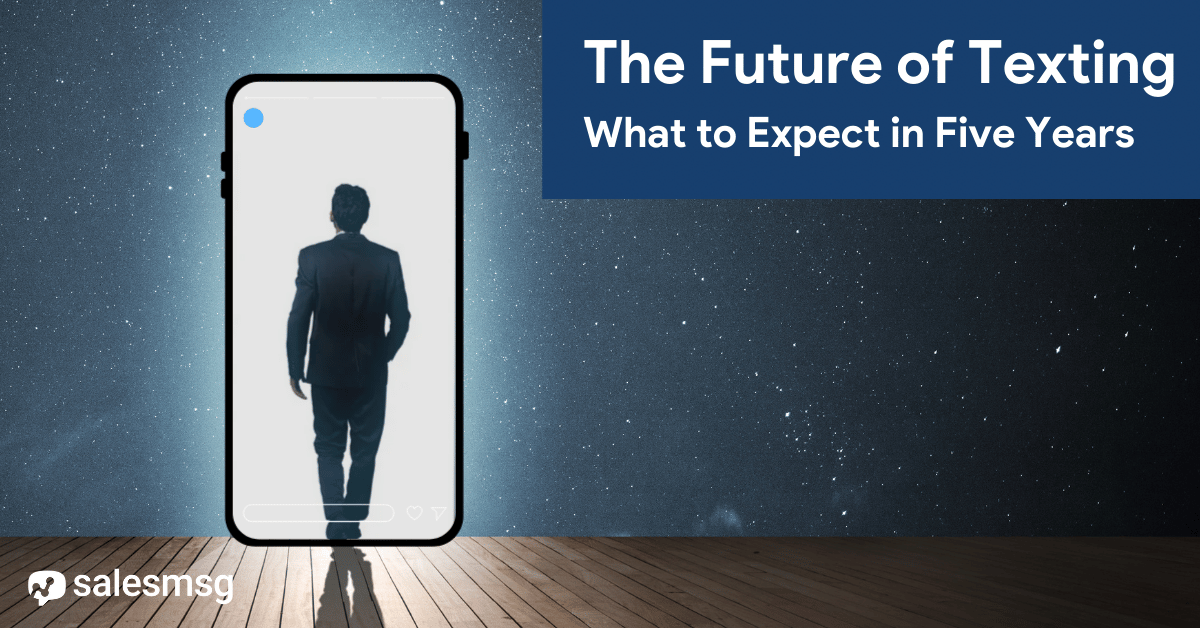The SMS Deliverability Guide: How to Ensure Your Texts Get Delivered

If your business sends text messages, then I’m sure SMS deliverability is at the top of your mind.
After all, without maintaining high deliverability, your customers and prospects won't be able to receive your texts.
We’re just over a month into new carrier regulations that impact every single business owner who sends text messages in the US.
Below, you’ll learn the only four things that matter when it comes to SMS deliverability. Each of these four components works together to help ensure you maintain high SMS deliverability and that your texts actually reach your customers.
Let's dive in.
Channels: Choose the Right Type of Number for the SMS Channel
When it comes to using SMS as a customer communication channel, there are different types of numbers you can use to reach your customers.
The type of phone number you use for SMS depends on what you’re going to be using SMS for. There will also be impacts on SMS deliverability based on the type of number.
Here’s a quick overview of the three main types of numbers you’ll be using for SMS messages, short codes, toll-free, and local:

As you can see, each has its pros and cons.
With short code messages, you’ll get the best deliverability, and the ability to send high-volume bulk texts. You’ve probably seen these kinds of messages before when getting two-factor authentication messages, notifications from your bank, or marketing messages from eCommerce stores.
Next, we have toll-free numbers. These get better deliverability but are not as good as short codes. You’ll recognize these as messages coming from area codes like 888, 866, 844, and more.
You can send a pretty high volume of messages between 100k and 500k messages every month. Plus, you can do two-way texting, which makes it the perfect vehicle for marketing, customer support, and other customer engagement messages.
The final type of number you can use is a local number. These come from your local area code and are generally used for two-way SMS. The deliverability isn’t as good as the previous two options and usually, this type of number will be used for smaller-scale since you can only send under 100k messages every month.
Next, here’s a breakdown of some of the limits that are placed on each type of number:

First, looking at short codes, you’ll see there’s very little message filtering. This is because you’ll already have gone through an in-depth application process.
Plus, you can send up to 100 messages per second and have basically no limits on the amount of messages you can send.
Now, this does come at a price. The carrier fees alone for this type of number are $3,000 per quarter.
Next, we have local numbers. With local numbers, there’s a high amount of content filtering (you’ll learn more about this below). Even though you’ve gone through 10DLC registration, carriers will still be filtering your messages.
With toll-free numbers, there’s a medium to high level of content filtering. You’ll have to go through the toll-free verification process to start using this type of number.
Compliance: Obtain and Maintain Compliance With the Carriers
The second part of the SMS deliverability equation is compliance.
You already know how great SMS is as a channel. It gets the highest open and deliverability rates out there.
But, for a long time, anyone could get a phone number and start sending texts. With a 99 percent open rate, you could bet that people were going to abuse it eventually.
Since unwanted messages decrease trust in the channel as a whole, the carriers needed to crack down to maintain its integrity.
This isn’t anything new, we’ve seen this happen before with email service providers (ESPs).
Essentially, carriers want to know two things about your business:
- Who are you?
- What you’re going to send?
The main goal of these different rules and regulations is to verify these two things, so you can start sending messages again.
For a more detailed breakdown, see our in-depth post on the current state of SMS deliverability.
Contacts: Send to Clean Contacts and Master Your Bounce and Opt-Out Rates
The third big component of SMS deliverability is the contacts you’re sending your messages to. There are essentially good numbers and bad numbers, and you’ll want to be sure you’re only sending to good numbers.
A lot of this starts with how you’re getting your numbers in the first place. One thing we make sure we do when setting up our forms is to ask for the mobile phone number on the form. This will improve the quality of your contacts without doing any additional work.
Now, there are two main factors that’ll impact your deliverability when it comes to your contacts:

Your opt-out rate is the number of contacts who have replied STOP to a message you send. What carriers are looking at is the ratio of opt-outs for each message you send.
If you have high opt-out rates, then carriers will block you from sending messages.
When carriers see these high opt-out rates, they actually come to us. We show them how you get consent to message your users, just to see where these numbers are coming from.
Here are some of the best practices to minimize your opt-out rate:

Essentially, treat your SMS list like real humans. Imagine you were on the receiving end of your messages.
And if you’re struggling with crafting compelling and engaging messages, then give our new AI texting assistant a try.
Next, we have bounce rate, which is how many messages went undelivered?
These are messages that were sent to fake numbers, landlines, and more. Since these numbers can’t receive text messages they’ll bounce.
If your message bounce rate is too high, then carriers will block traffic. The bounce rate percentages are between 1 to 5 percent within a 7-day period, which isn’t that high.
That’s why it’s so crucial to make sure your SMS list is clean and only has mobile numbers.
Here’s a deeper look at the kinds of numbers that can actually receive texts:

As you can see, you basically only want to send to mobile numbers. Things like Google Voice and other VoIP tools like RingCentral, Vonage, and Grasshopper, can get texts, but it’s not guaranteed.
If you’re a Salesmsg user, then you can use PhoneCheckr. It’s a tool we've built that lets you upload your phone contact list to help you verify mobile numbers. This is an easy way to avoid sending texts to bad numbers.
Content: Send the Right SMS Messages and Avoid Content Red Flags
The last piece of the SMS deliverability chain is the content you send. Overall, message content is a black box.
But, there’s a lot we’ve learned after reviewing hundreds of millions of text messages.
Ignore these content pitfalls at your own risk.
Here are some of the biggest issues that’ll flag your messages and reduce deliverability:

The biggest red flag is including links in your first message, along with using URL shorteners. This has been abused by spammy senders in the past.
Now, we understand that you might need to send links. The best way to do this, while maintaining deliverability is to use a custom domain. Especially since this is the domain that you’ve already registered with the carriers.
Beyond links, you need to make sure your website is secure and uses SSL. Overall, a lot of content red flags are similar to spammy emails you probably get daily.
Most blocked text messages include some of the following:
- Sound spammy (like they belong in your spam inbox)
- Include too many special characters
- Are written in all caps (stop yelling please)
- Include banned works like CBD, cannabis, weed, etc
- Sending the same message repeatedly
- Using a brand new number for high-volume texting
- Sending long messages
For a more detailed breakdown of what content is prohibited, check out our prohibited SMS use cases and restricted messaging content articles.
Keep and Improve Your High SMS Deliverability with Salesmsg
As you’ve learned, there’s a lot you need to get right when it comes to SMS deliverability. Especially today with all the new regulations being passed down by the carriers.
If you’re currently running into issues with getting compliance, we’re here to help.
As a Salesmsg user, we’ve streamlined the entire application process within our dashboard. Plus, our customer success team is there to help you every step of the way.
You deserve to keep your high SMS deliverability to power your marketing, sales, and support communications, give Salesmsg a try today.
SMS Deliverability FAQs
Which numbers require 10DLC registration?
Local numbers require 10DLC registration, while toll-free numbers require toll-free verification.
What countries does this affect?
This affects the United States. If you aren’t based in the US but are sending texts to the US, then you’ll need to use a toll-free number.
What if my application status shows as failed?
There are several reasons this can occur. If you’re a Salesmsg user, then our support team can help you out. Within your account, you’ll get an error code that’ll show the reason your application was rejected.
Do link shorteners impact SMS deliverability?
Yes, a lot of link shorteners have been used by spammers and will impact deliverability. The best thing you can do is use links that match your company’s domain.
Will using a CRM to send messages impact deliverability?
No. At this time this doesn’t have an impact on your deliverability. The carriers can’t see that you’re using a CRM.
What if I don’t have an EIN?
To verify your business, you must have an EIN. The goal of the carriers is to protect real businesses, so a sole proprietor won't work for verification processes.
Why was my business approved, but the use case rejected?
This means that your business meets the requirements, but you're missing something from your use cases. For example, your web form could be missing the required compliance information.
Can you edit your application when it’s being processed?
No, once your application is submitted, it's submitted. There's no way to edit any information once it's sent. But, if it does get rejected you can always resubmit until it's approved.




















